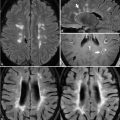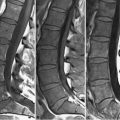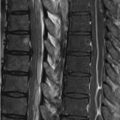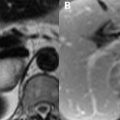67 Diffuse Hepatic Pathology Figures 67.1A through 67.1C illustrate findings characteristic of a fatty liver on FSE T2WI, in-phase, and out-of-phase GRE T1WI, respectively. An area of subtly decreased SI relative to the higher SI fat on (A) T2WI represents focal fatty sparing. On (B) in-phase T1WI, the liver appears of high SI. (C) Out-of-phase images clearly demonstrate signal loss diffusely within the liver with the exception of the spared focus, the SI loss resulting from negation of opposed water and fat signals as described in Chapter 69. FS imaging detects mild fatty infiltration less sensitively than in and out-of-phase imaging, as SI suppression from fat saturation when a small amount of fat is present is approximately half of that obtained in out-of-phase images, which suppress both fat SI and that of water (when present in the same voxel) due to destructive signal interference. Fat-predominant lesions are, however, better detected with FS imaging. The T2WI of Fig. 67.1D demonstrates a hypointense lesion (white arrow) in fatty liver, as further evident on (E) in and (F) out-of-phase images. As with neoplasia, no out-ofphase dropout is present, but a lack of abnormal enhancement on (G
![]()
Stay updated, free articles. Join our Telegram channel

Full access? Get Clinical Tree








